On the days approaching the Easter bank holiday weekend I knew I wanted to do something but could not settle on where to go or what to do. Fellow BoldlyGoer James suggested a few places but it was Dartmoor that really grabbed my attention. It is the only area in England where rights for wild camping are enshrined in the National Parks and Access to the Countryside Act. Whilst not all of Dartmoor is covered by this, there are some pretty sizeable areas which allow wild camping (if you’re curious, have a look at this map created by Dartmoor National Parks). After researching them on my 1:25k OS map for Dartmoor (OL28) I began to think about how my trip may go down.
A plan unfolds in my mind… Drive down to Dartmoor on the Thursday, park up, hike and wild camp on the Thursday evening followed by a full day of walking on the Friday, wild camp that night and then hike back to the car on Saturday and drive back home. That’s about 48 hours. I decided that was short enough to carry all the supplies, food and water I would need for that time on my back, in my newly acquired Osprey Atmos AG 65.

Unfortunately, due to the inevitable crash which always snarls up the M25 leading up to a bank holiday weekend I arrived in my planned starting point of Harford at about 7pm, a little later than planned. With sundown at around 8pm I made haste up into the hills to find a suitable spot to set up camp and have some dinner.
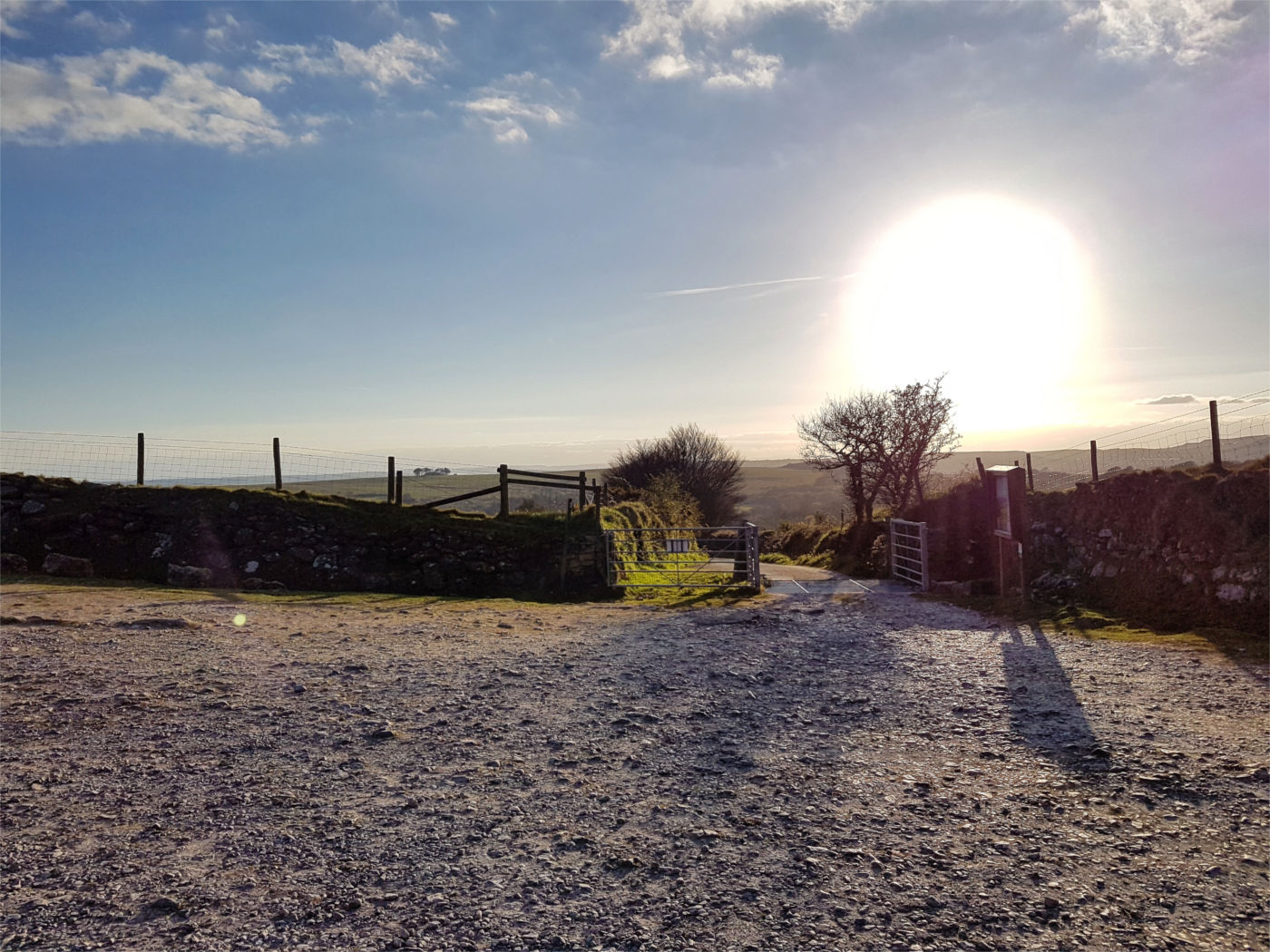
Just in time for sunset I reached Piles Hill and hunted for a flat spot to set up my tent. I thoroughly recommend this area or any of the surrounding hills for breathtaking views of Dartmoor at sunset and sunrise. It’s only about a 30 minute walk from the nearby (free) Harford car park too!
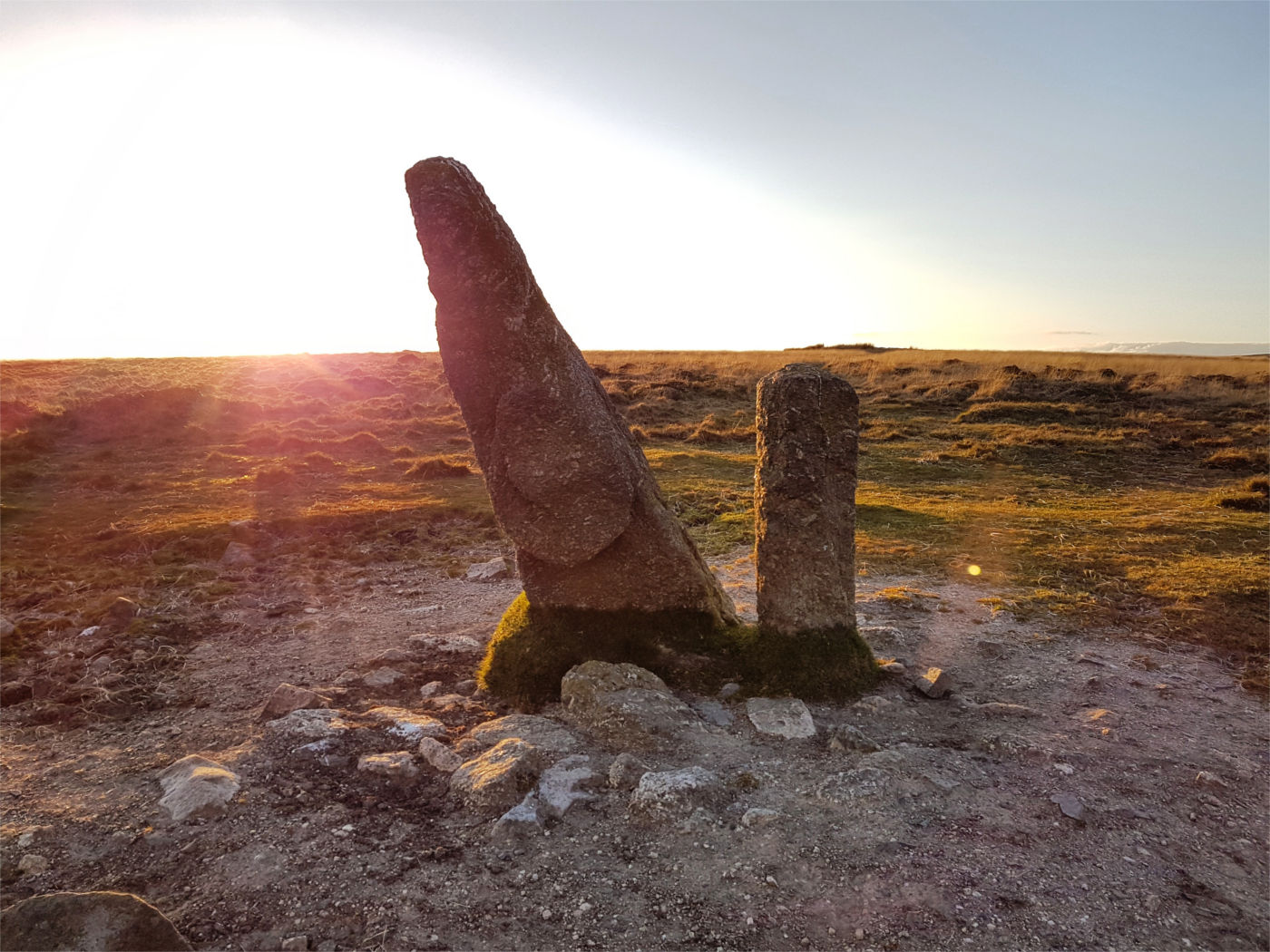
Once I’d got the tent set up, the sun was just disappearing from view so I cracked out the gas stove, cooked up a Jamie Oliver squeeze-out-the-bag dinner and scoffed it down. With darkness slowly crawling over the countryside and no desire to start a campfire, there really wasn’t much else to do but call it an early night and get some rest for a full day of hiking the next day.
It’s worth noting that this was my first experience of wild camping on my own. It’s a surreal experience to get used to; every sound outside of the tent amplified, making you question its origin. Even though I did have the internal reassurance that my wild camping pitch was entirely legal, it still didn’t stop me from imagining some wild beast, or worse, fellow camper, waking me in the night… Still, I got some kip.
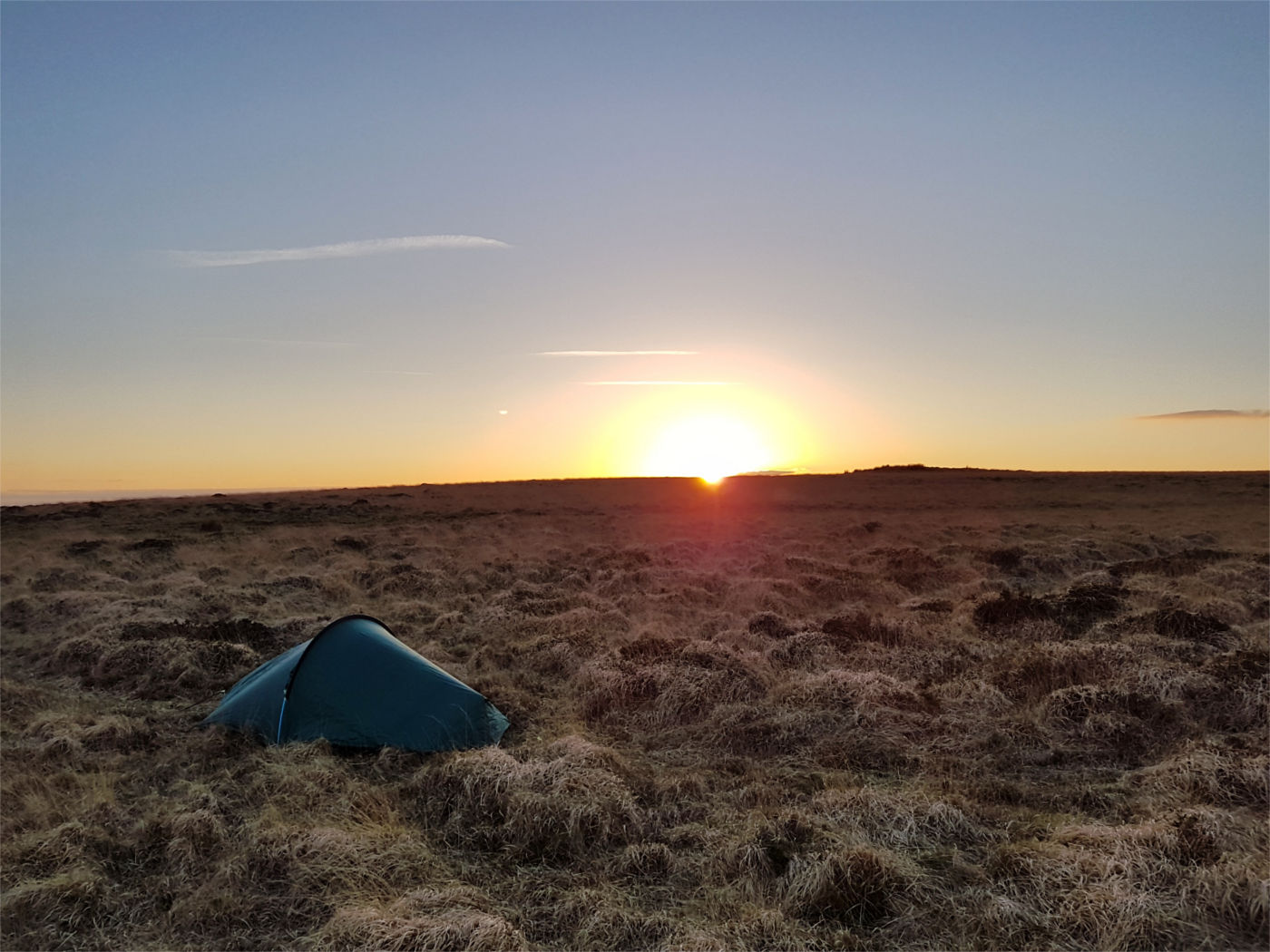
I woke early and decided to take a stroll, sans pack, to the nearby Ugborough Beacon which has stunning views out to Buckfastleigh and North Dartmoor. On arriving here I realised that this would also have been a fine spot to camp and would have offered a spectacular view of the sunrise, straight from the tent door!
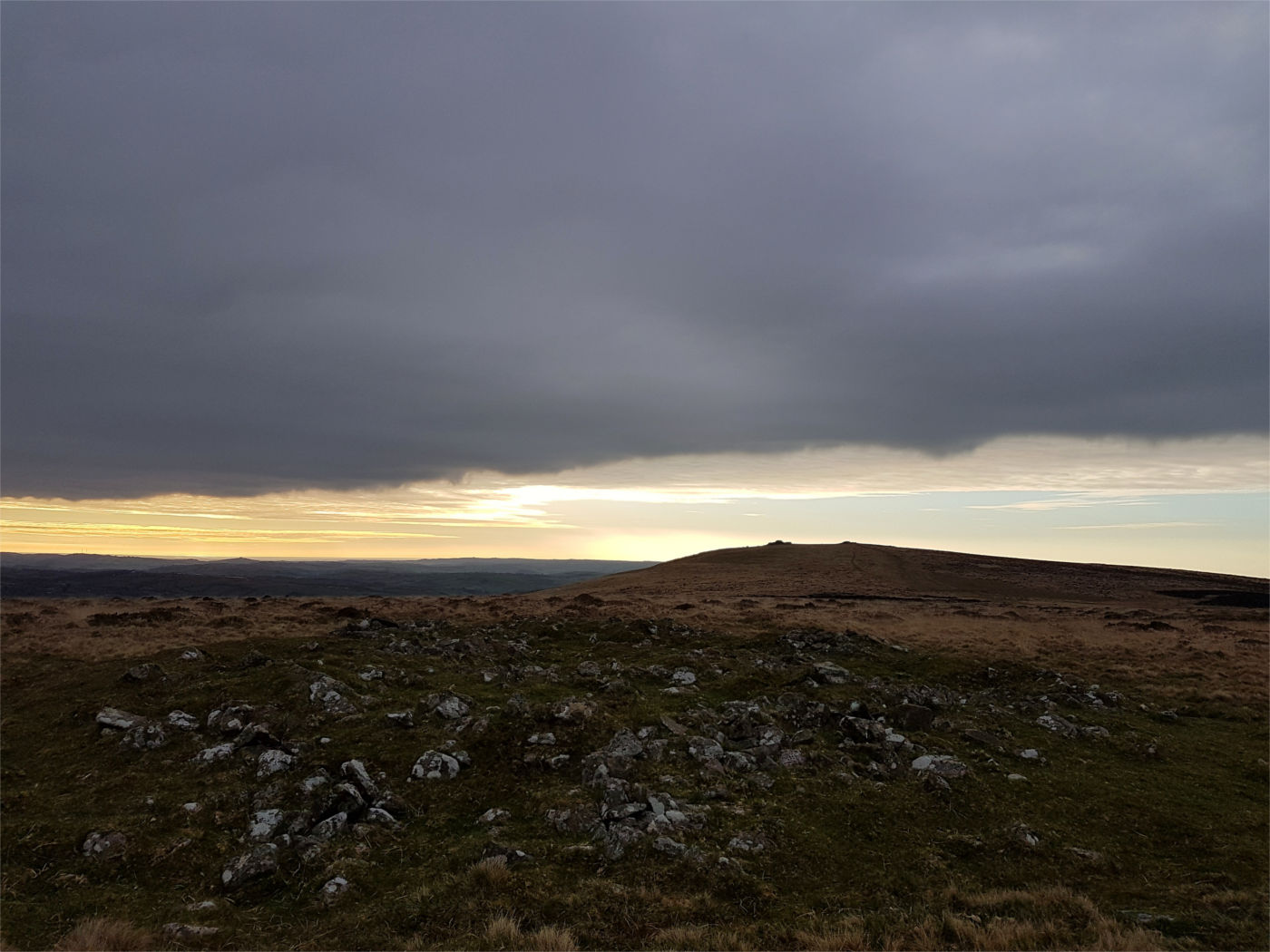
After walking back to my temporary abode, I packed up my gear and embarked on my way with the vague aim of striking camp somewhere North of Burrator Reservoir. Dartmoor offers some very decent paths if you stay on the beaten track and most of these run along the crest of the hills meaning that there is very little ascending and descending to be done. Dartmoor generally isn’t too hilly compared to our Lake and Peak District National Parks. The highest point in Dartmoor is High Willhays at 621m, way up in the top left corner; but the hills around the bottom part of Dartmoor are all below 500m. However, if you should stray from the beaten track, you may well be in for a calves aching exercise traversing the common grassy tufts. One of the most familiar sites along my trek were the famously furry, wild Dartmoor ponies; their tracks are littered across every path in Dartmoor.
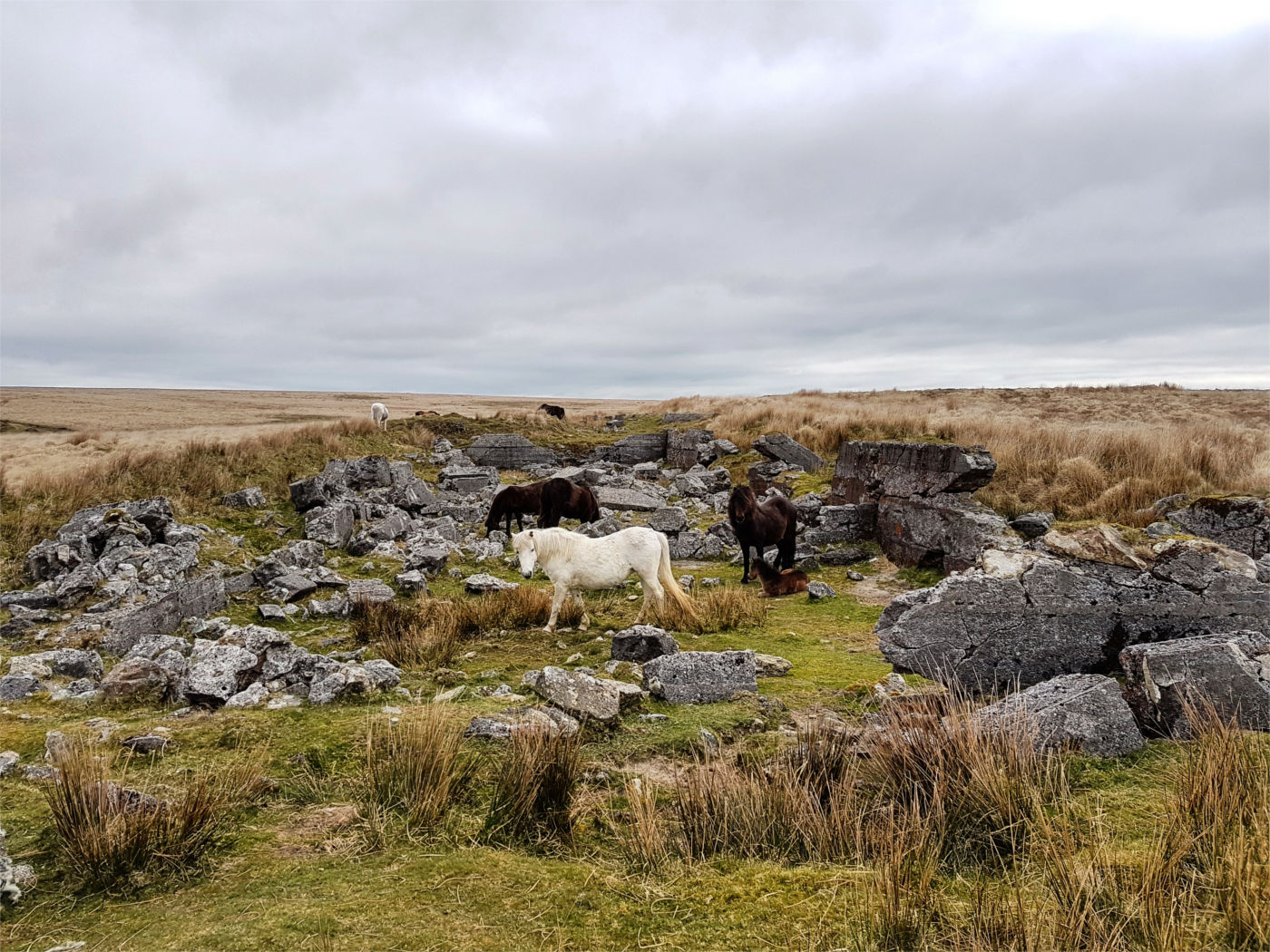
Another regular sight is sheep, their beady eyes staring until they’ve somehow decided you’re no longer a threat. I remember several times where a sheep was happily munching away on some foliage with its back to me when it would hear my footsteps and suddenly fly around to make eye contact. Dude, come on, I mean ewe no harm.
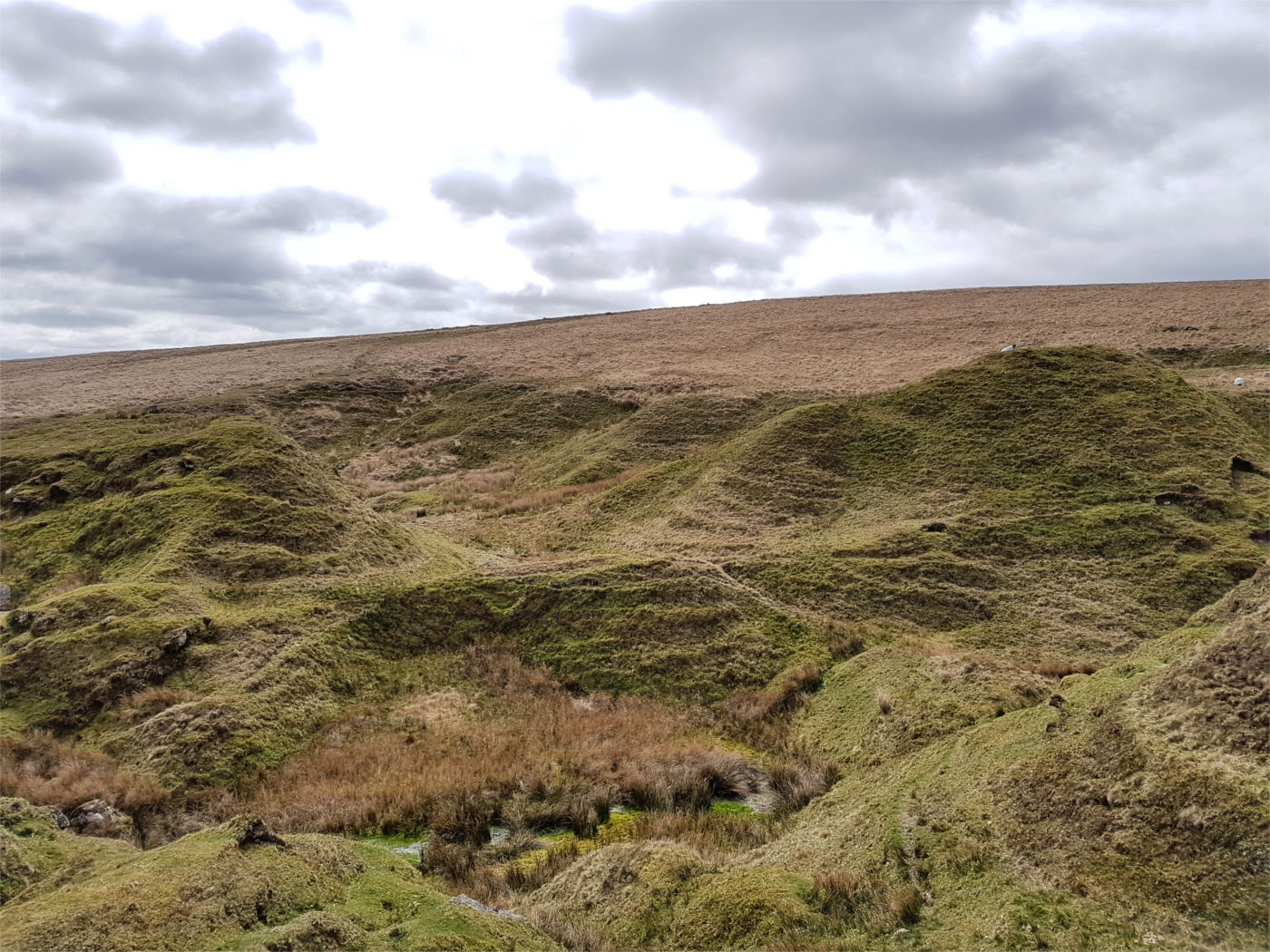
On my walk through Dartmoor I was greeted by a handful of people happily singing hello along with the question that demands to be answered by another question, lest, god forbid, you should strike up conversation…
- “Hey! How’s it going?”
- “Hi, you alright?”
But I did get talking to a couple of chaps out for a stroll from Ivybridge who informed me of a famous book about the area, Dartmoor 365 by John Hayward; named as such because there are approximately 365 square miles in Dartmoor. In this book, John details one specific site of interest in each of these square miles. My single serving friends also informed me that there is a lively Facebook group of people who go out of their way to photographically document as many of these 365 sites as possible. In my mind this is akin to geo-caching or a treasure hunt. After my excursion to Dartmoor, whilst sitting in the comfort of my own home, I requested entry to the group, was accepted, and proceeded to peruse some of the pictures posted in the group. I can proudly state that I have visited at least one of John Hayward’s 365 points of interest, Ditsworthy Warren, a rather spooky looking abandoned cottage near to Sheepstor.
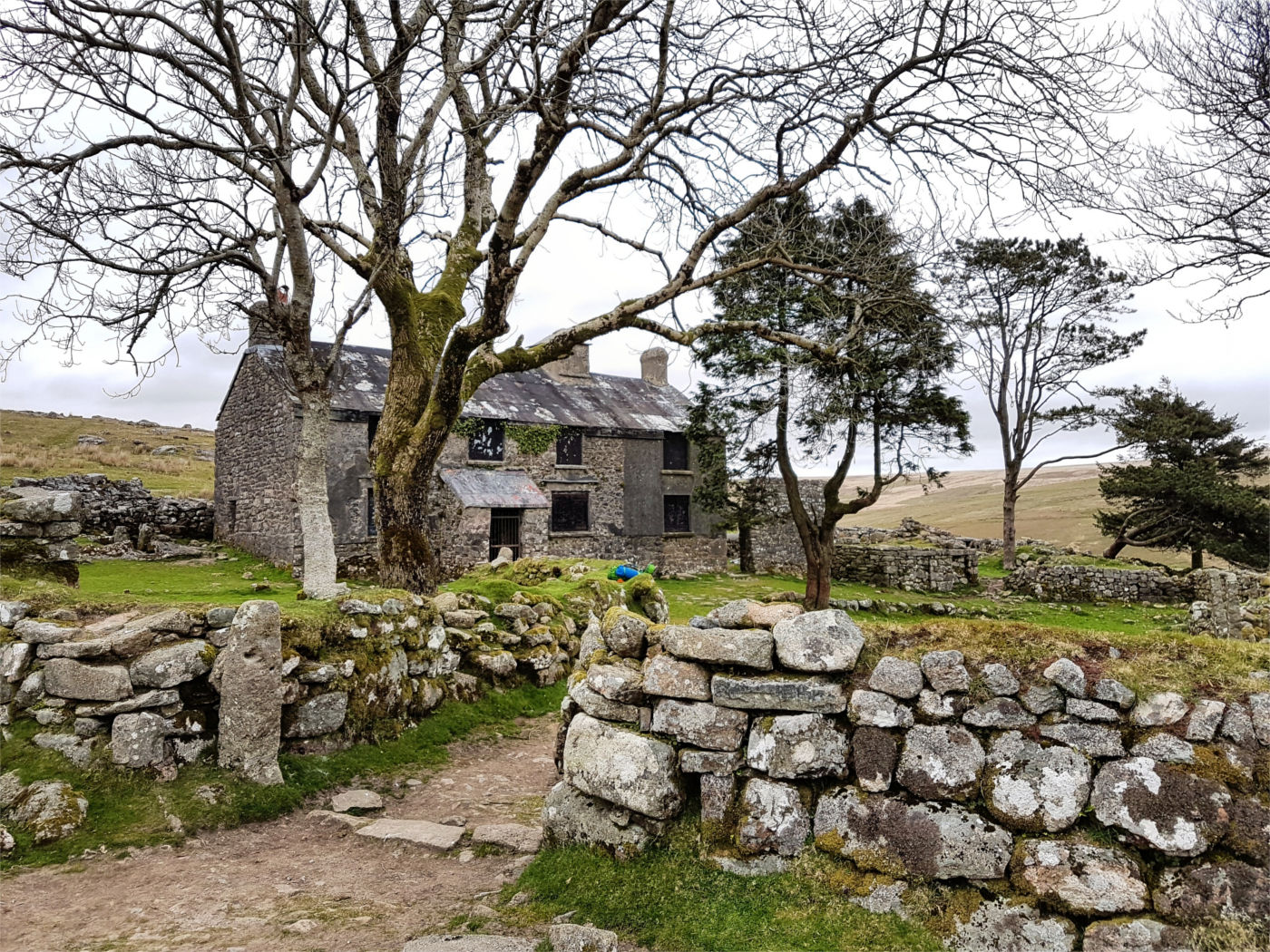
From Ditsworthy Warren I headed to Sheepstor, skirting round Burrator Reservoir and up to Sharpitor aiming to find some camping spot with an epic view of the water but not too exposed to the elements. One risk with wild camping is that you’re constantly searching for that goldilocks spot… “maybe the grass is greener on the other side of that hill…”. Eventually I managed to convince myself that the spot I’d chosen was just right and made camp for the night.
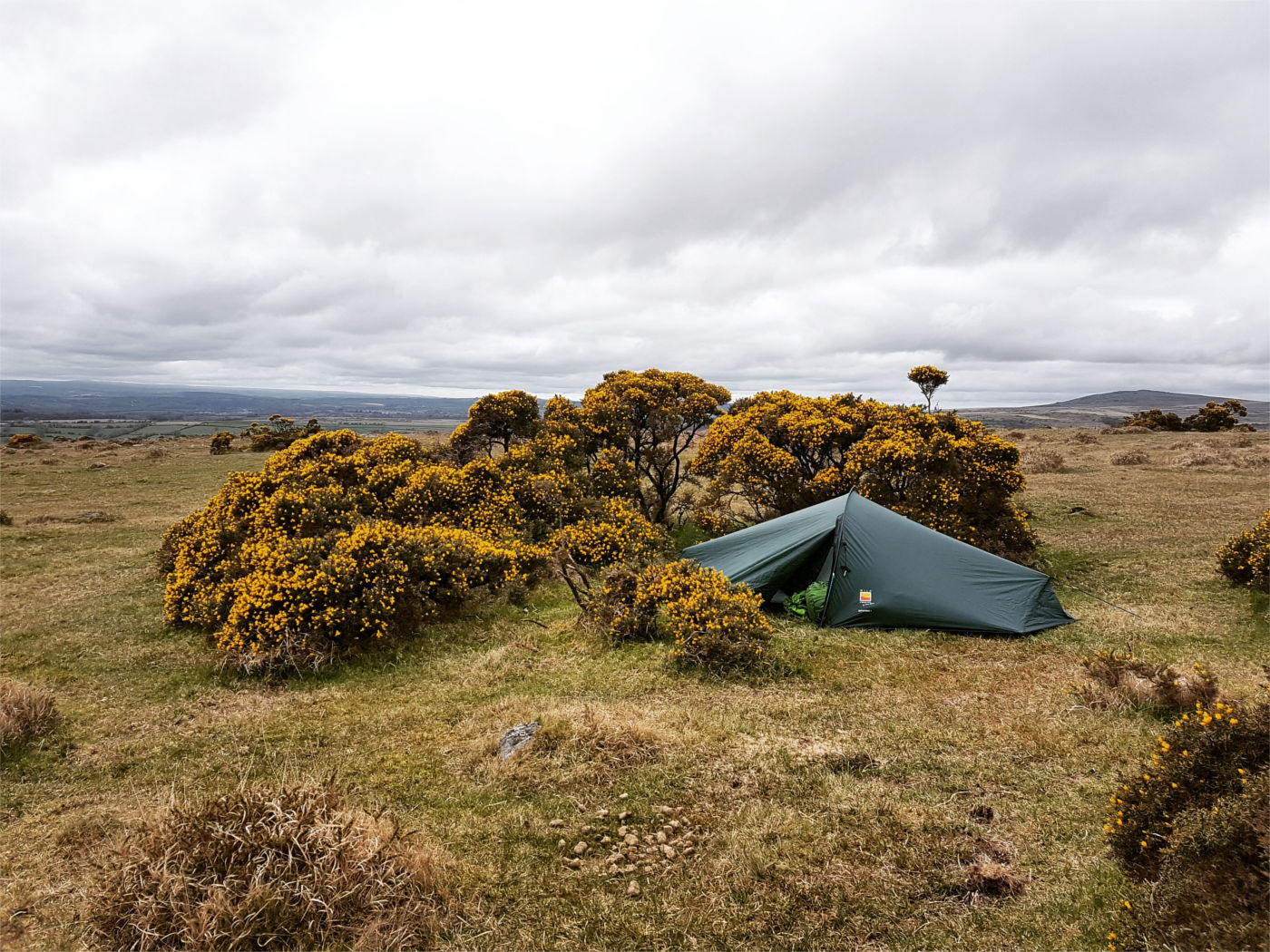
After waking early again I planned my route back to the car whilst hearing a light pitter patter of rain on my tent. Ten minutes after setting off, fully kitted out in waterproofs, the light drizzle abated and I happily stuffed them back into my rucksack. At this point I was starting to feel slightly thankful that my supplies and water were dwindling; reducing the weight on my back and making it a less daunting task to tackle some more challenging obstacles.
When planning my route that morning I selected a circular route avoiding paths I’d already used. Included in this route was a path with an attractive straight section running south from Whiteworks. It was only after getting home, that I discovered that this stretch of land has a famous reputation. The path crosses over Foxtor Mires, a stinking bog, which is believed to be the inspiration for Grimpen Mire in Sir Arthur Conan Doyle’s classic, The Hound of the Baskervilles. However, when I planned out my route, I didn’t realise its famous reputation. I didn’t even realise it was a bog.
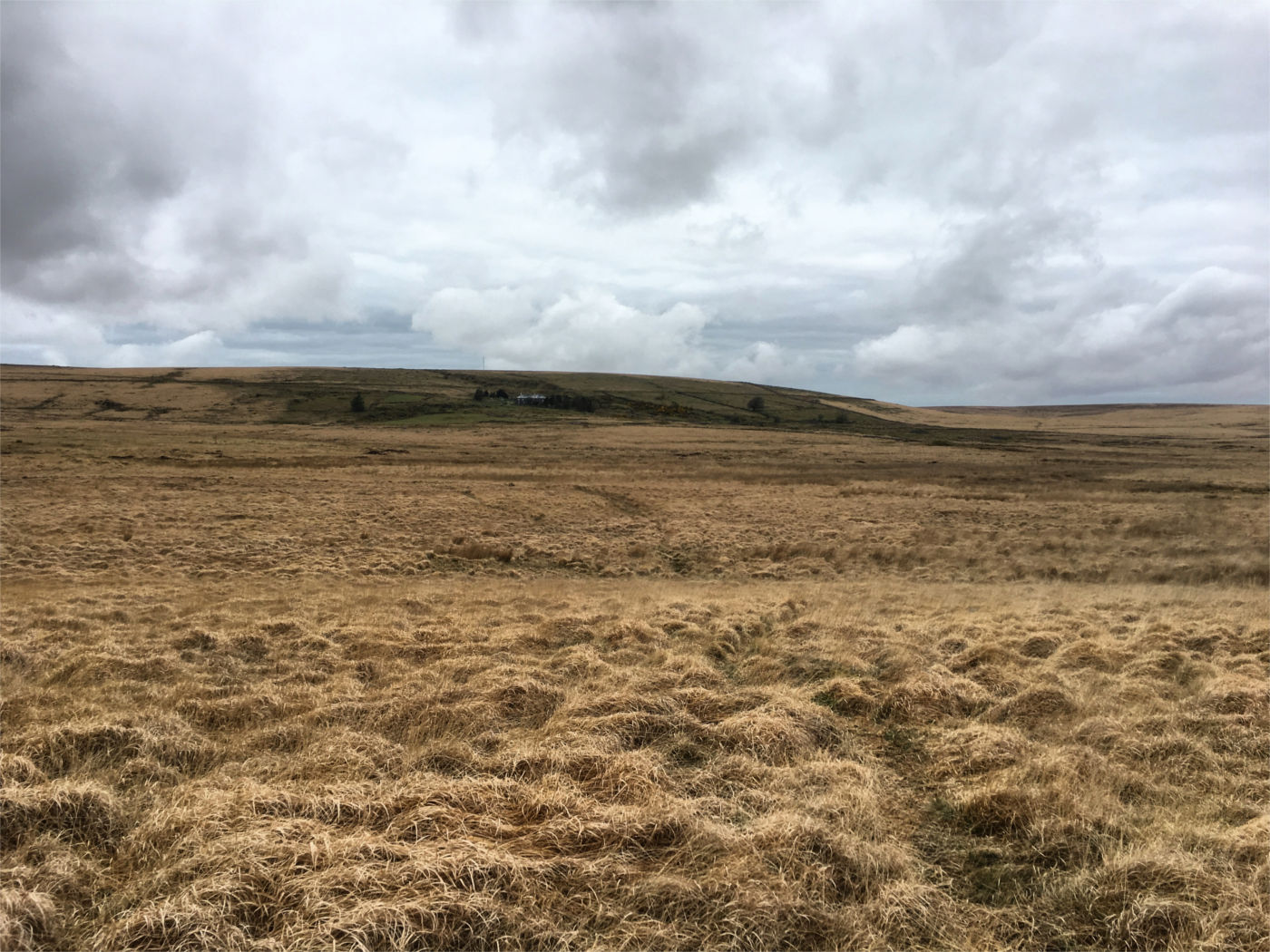
I think Sir Arthur Conan Doyle brilliantly articulates the threatening nature of a bog and the truly terrible fate that could befall a man when he describes the demise of the villain, Mr Stapleton, in Hound of the Baskervilles in his flight across the Grimpen Mire:
“There was no chance of finding footsteps in the mire, for the rising mud oozed swiftly in upon them, but as we at last reached firmer ground beyond the morass we all looked eagerly for them. But no slightest sign of them ever met our eyes. If the earth told a true story, then Stapleton never reached that island of refuge towards which he struggled through the fog upon that last night. Somewhere in the heart of the great Grimpen Mire, down in the foul slime of the huge morass which had sucked him in, this cold and cruel-hearted man is forever buried.”
I lost the path crossing through Foxtor Mires before the small bridge which takes you over the stream in its centre. I only found it after 20 minutes of wondering around that godforsaken bog trying to find a safe path, twice getting stuck up to my thighs. I think one of the most treacherous things about a bog is that it doesn’t look particularly threatening. A few tips from someone who has sunk in a bog:
- Do a bog hop on the yellow tufts and keep moving, they’re more likely to take your weight, but not for long.
- Avoid any bright green mossy areas. This is where you will sink and you will get wet boots and maybe a wet bum.
- Use a walking stick to probe suspicious patches in front.
- Don’t cross a bog.
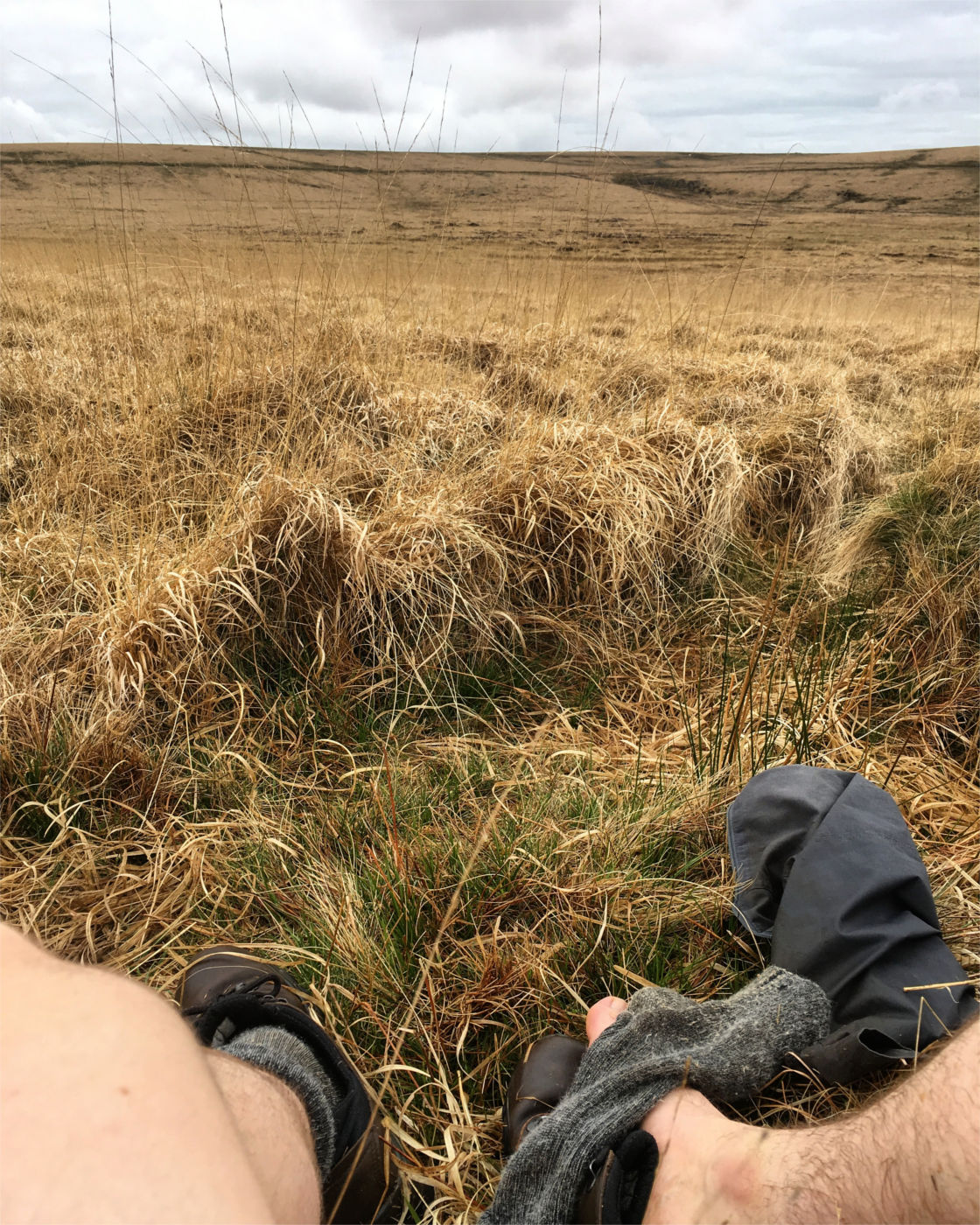
After another three hours of walking with wet boots I reached the car, exhausted but satisfied with a couple of days well spent exploring one of our country’s best national parks. Still I was happy to get back into some warm (and dry) clothes.
